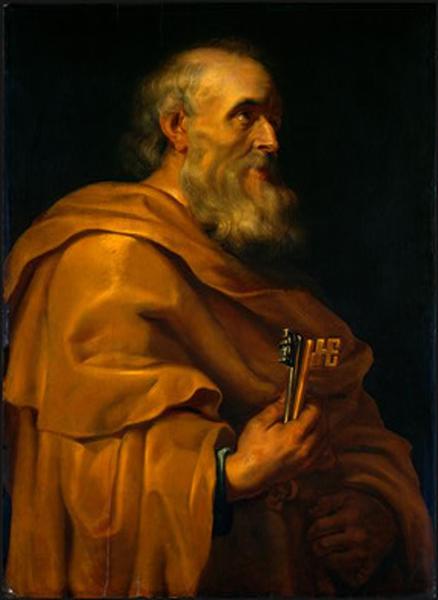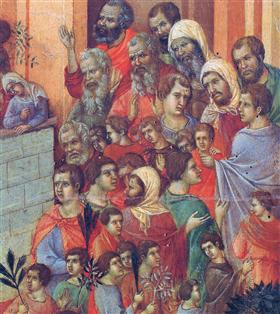 |
| Duccio -- Road to Emmaus |
The Gospel story for this Sunday recounts one of the
best known and most intriguing of Christ’s Resurrection appearances – the Road
to Emmaus. It has inspired hundreds of artists, including great masters such as
Duccio, Titian, Caravaggio, Velasquez and Rembrandt. This popularity among painters made
it a perfect subject for the world’s most famous art forgery – a ‘Disciples at
Emmaus’ ostensibly by the celebrated Vermeer, but in reality by the unknown van
Meegeren.
The episode is unique to Luke, and what makes it so intriguing is its
ordinariness. Last week’s Gospel (from John) related Christ’s appearance in an upper
room behind locked doors. There is mysteriousness about this that provides
the context for Thomas’s understandable doubts. Luke’s account of the Emmaus
appearance is quite different. To begin with, these ‘disciples’ were not among
the twelve, and though their sadness and puzzlement about the death of Jesus is
palpable, the journey they are on seems to be for some practical purpose of
everyday life. Most striking of all is this. Unlike the disciples in the upper
room, they do not recognize Jesus straight away, but walk with him along the
road for quite some time, assuming he is just another traveler. Their moment of
recognition comes when they suddenly recognize the characteristic way in which he
performs the familiar act of breaking a loaf of bread for supper.
 |
| Velasquez Supper at Emmaus |
These little ‘epiphanies’ invite us to repeat the
same ‘question and answer’ that we find in today’s reading from Acts -- “What
should we do?”. Peter’s answer to his hearers was “Repent, and be baptized
every one of you in the name of Jesus Christ so that your sins may be forgiven”.
For those who were baptized long ago, often in infancy, this cannot be the
immediate response. Nevertheless, as the practice of renewing baptismal vows
implies, we need to acknowledge again and again the truth of which this week's Epistle
reminds us. We have been saved from
futile ways of life by the ‘death of Jesus’, and not by any ‘silver or gold’, even
if this is what much of our time is spent trying to secure. Fully grasping this deep truth requires spiritual
renewal. The Disciples at Emmaus provide a compelling model of how that can
happen, surprising us 'on the road'. With such renewal we are enabled once more to make our own voices the
voice of today’s Psalmist “O LORD, I am your servant. You have loosed my bonds.”

.jpg!PinterestLarge.jpg)




